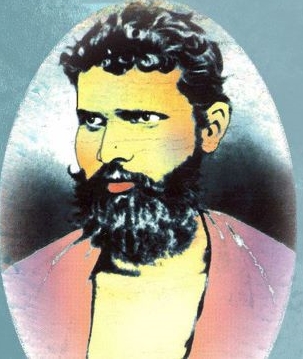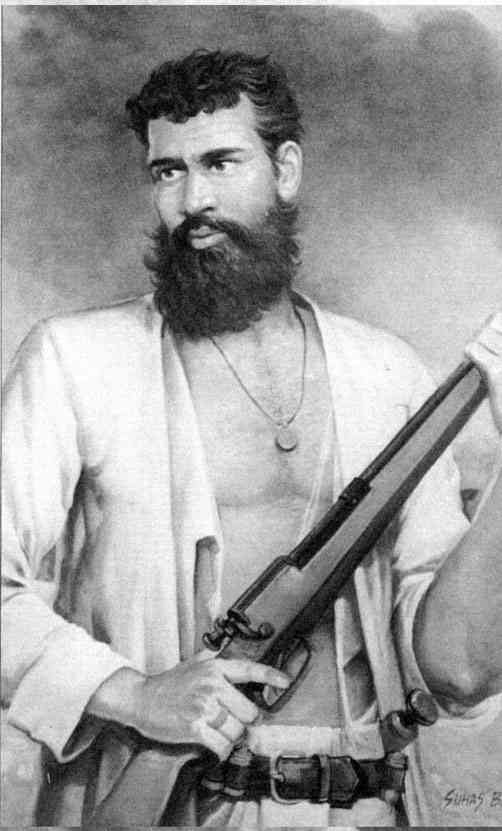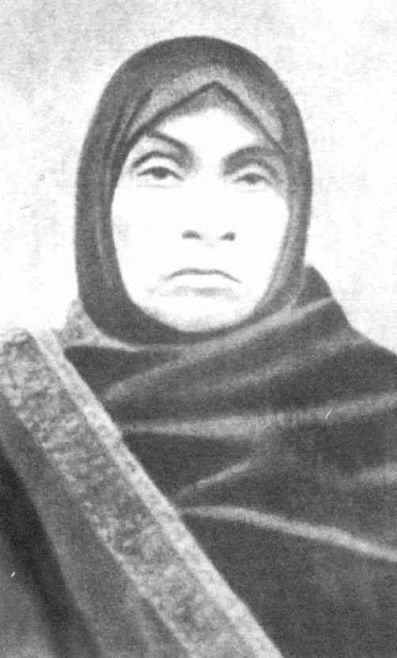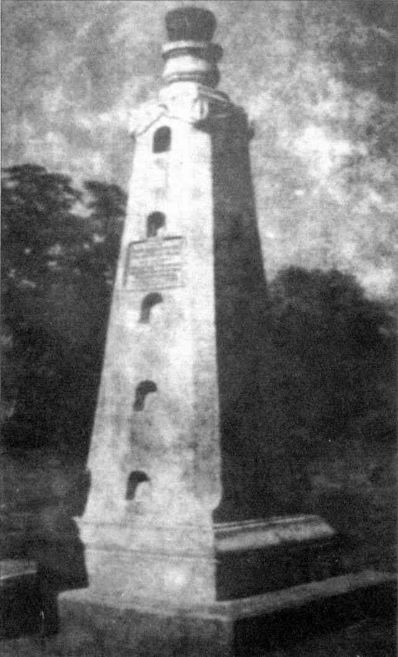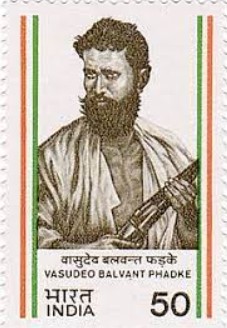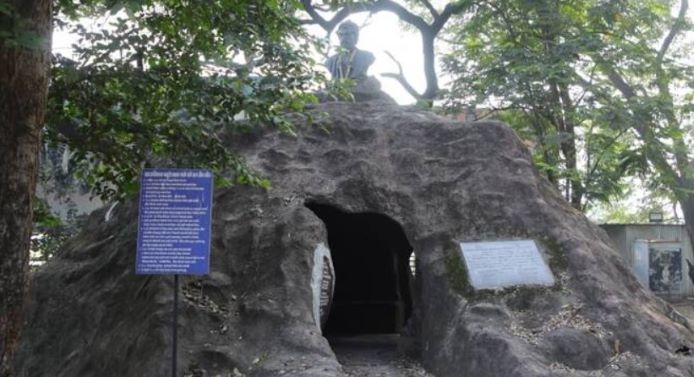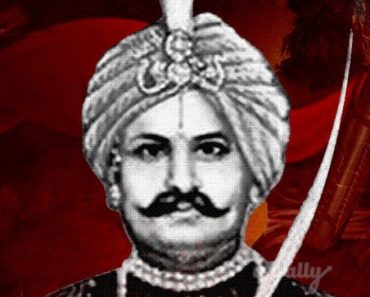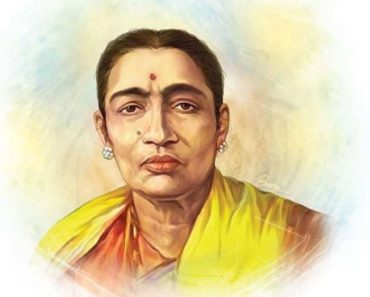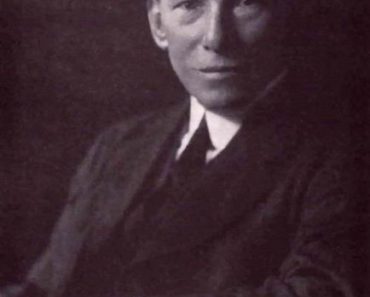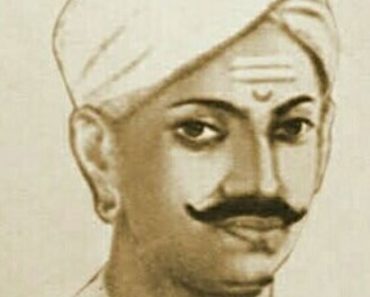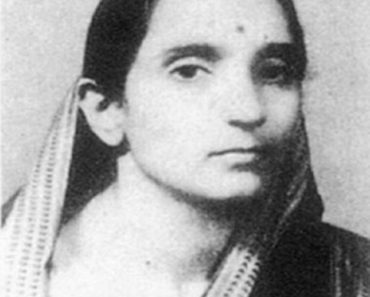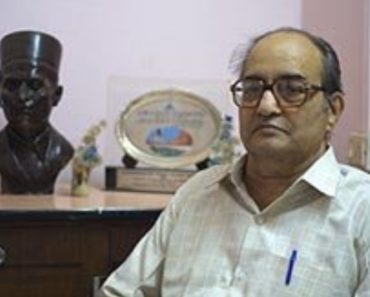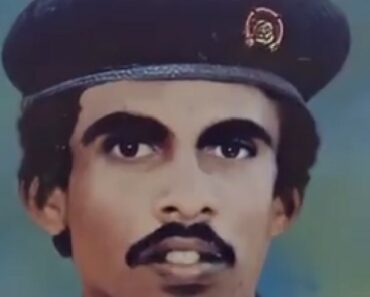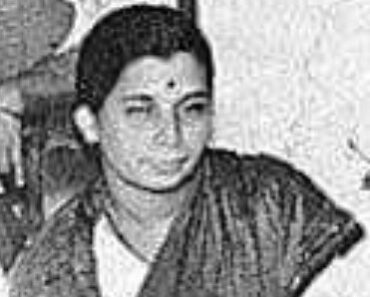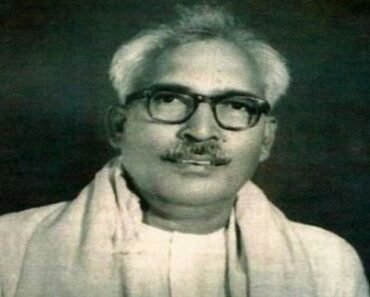Vasudev Balwant Phadke was a renowned Indian independence activist from Maharashtra. He is called the ‘Father of the Indian Armed Rebellion,’ who pioneered the armed revolution against colonial rule in India in the eighteenth century when the farming communities in India were brutally tortured by the Britishers. All these circumstances exhorted Vasudev Balwant Phadke to organise his own movements against British rule by uniting the volunteers of various Hindu sub-communities. He was involved in looting wealthy European businessmen for funding his arms struggle to uproot the colonial rule in India. He once ruled the Pune city in Maharashtra for some days after a surprise attack in which the British soldiers were defeated.
Contents
Wiki/Biography
Vasudev Balwant Phadke was born on Tuesday, 4 November 1845 (age 37 years; at the time of death) in Shirdhon, Raigad, Maharashtra, British India. His zodiac sign was Scorpio. He attained a bachelor’s degree at Bombay University. [1]The Indian Express
Physical Appearance
Hair Colour: Black
Eye Colour: Black
Family
Parents & Siblings
His father’s name is Balvantrao Phadke, and his mother’s name is Saraswati Bai. His grandfather’s name is Anantrao. He had a brother and two sisters. [2]EPARLIB
Wife & Children
Vasudev Balwant Phadke got married to Saibai in 1859. Saibai died in 1872. He again got married to Gopikabai Phadke in 1873.
He had a daughter named Mathutai from his first marriage.
Caste
Vasudev Balwant Phadke belonged to the Chitpawan Brahmin community. [3]Scroll
Early Life
In childhood, Vasudev Balwant Phadke liked wrestling and horse riding. He was a high school dropout. Vasudev moved to Pune after leaving his school education. In Pune, he worked as a clerk at the military accounts department. He worked for fifteen years with several other government departments. During his work tenure, he started following Krantiveer Lahuji Vastad Salve, who was the acclaimed social personality of Maharashtra. In Pune, Salve used to run a wrestling training centre named TALIM and was a patriot, who belonged to an untouchable community. Salve was often spotted delivering patriotic lectures publicly and speaking about the importance of independence. It was Salve who exhorted Vasudev Balwant Phadke to establish his own rebellion army by organising a group of backward classes to get freedom from colonial rule. During the same time, Vasudev Balwant Phadke started following Mahadeo Govind Ranade, who was often spotted delivering lectures that were based on the concept that how the economy of India was adversely affected by the implementation of economic policies of colonial rule.
Revolutionary Activities
In 1870, Vasudev Balwant Phadke participated in a public protest against the colonial rule in which redressing the public grievances was demanded. Later, Vasudev Balwant Phadke started educating Indian youth about the policies of colonial rule and founded an institution named Aikya Vardhini Sabha for the same. When he was working as a clerk in the military accounts department in Pune, once, his leave application was not approved by the British authorities as he wanted to see his ailing mother, who was on her death bed. The harsh rules of the British government for the Indians became one of the reasons for Vasudev Balwant Phadke to revolt against them. Later, he completed his graduation from Bombay University, and he became one of the earliest Indians to pursue graduation from this British-established institution. In 1860, Vasudev Balwant Phadke, Laxman Narhar Indapurkar, and Waman Prabhakar Bhave established the Poona Native Institution (PNI), which was later renamed the Maharashtra Education Society (MES). Later, the Bhave School in Pune was started by Vasudev Balwant under the Poona Native Institution (PNI).
Wife: A Revolutionary Companion
Vasudev got married to Gopikabai in 1873. He taught her how to wield swords, fire guns, and ride horses. According to Mohan Shete, a Pune-based historian, teaching swords, guns, and horse riding in a Brahmin household was radical at that time. In one of his writings, Shete mentioned,
By now, he was becoming a revolutionary. He taught Gopikabai to read and write as well as wield swords, fire guns and ride horses in the surrounding forests. These were activities that men practiced, but to make one’s wife do it, and in a Brahmin household, was radical. Vasudev’s thinking was that his wife should be able to fight if there was war with the British.”
Famine in Maharashtra
the Gaekwad ruler of Baroda was removed by the colonial government in 1875. Phadke revolted against the decision of the British and initiated a public agitation against Britishers by delivering speeches publicly. This was the time when a severe famine affected the people in Maharashtra, and the indifferent behaviour of the colonial government toward the poor farmers exhorted Vasudev Balwant Phadke to travel to the Deccan region of the state on foot. During his travelling, he motivated Indians to rebel against the harsh policies of the Britishers. He did not get the support of the educated class of the region but was assisted by the lower sections of the society including Ramoshi, Kolis, Bhils, and Dhangars. Soon, he started establishing his own army of three hundred men to fight against the Britishers for the freedom of India. Vasudev brushed up his shooting, horse riding, and fencing skills during this period. He desired to expand his army; however, he was lack of funds and arms, which encouraged him to raid the government treasuries. He first raided the house of a local businessman named Balchand Fojmal Sankla in the Dhamari village in Shirur taluka in the Pune district. The income tax money collected by the Britishers was kept at his house. The four hundred rupees was the first looted amount of Vasudev and his army. This amount was spent by them for the welfare of the famine-affected villagers. Soon after the raid, Vasudev Balwant Phadke was listed as a dacoit by the Britishers. Vasudev Pahadke stated in his autobiography that during this time, he was only thinking about the downfall of British rule in India. He wrote,
Thinking day and night of this and a thousand other miseries, my mind was bent upon the downfall of the British power in India. I thought of nothing else. The idea haunted my mind. I used to rise in the dead of night and ponder over the ruin of the British until at last I almost became mad with the idea.”
Escape
Vasudev Balwant Phadke was sheltered by his supporters soon after the dacoity, and he was running from one village to another for protection. The ones who sheltered him mostly belonged to the lower class societies. His patriotism and struggle for the freedom of India impressed the villagers of Nanagaum, who protected him in their local forest during his escape. Later, Shirur and Khed talukas areas in Pune were raided by him to feed and help the famine-affected farmers. He used to cheat the British personnel by cutting all their communications from the government treasury. In May 1879, Vasudev Phadke’s supporter Daulatrav Naik looted around 1.5 lakh rupees from Palaspe and Chikhali areas; however, Naik was killed by Major Daniel soon after his dacoities. After Naik’s death, Phadke halted his mission for some time and went to the Shri Shaila Mallikarjun shrine in South India. Later, he initiated a fresh revolt against the Britishers by recruiting about 500 Rohilas into his army. The British government announced a reward to capture Vasudev Balwant Phadke when he had a direct encounter with the British army in the Ghanur village. However, they failed to capture him. On the contrary, Phadke announced a reward to capture the Governor of Bombay and kill the Europeans. Later, he travelled to Hyderabad to recruit Rohillas and Arabs into his army. This triggered the British government to chase Phadke, and they ordered a British Major, Henry William Daniell and Abdul Haque, a Police Commissioner to the Nizam of Hyderabad to find Phadke.
Death
The information about the hiding place of Vasudev Balwant Phadke was provided to the British government by some local people on 20 July 1879. After a long scuffle with the police, Vasudev was detained in a temple in the Kaladgi district and was put at Devar Navadgi in the Bijapur district. During a court trial in November 1883, Vasudev Balwant Phadke stated in the courtroom that he did not succeed in letting his country free from colonial rule. He said,
Day and night, there is but one prayer in my heart, Oh God, even if my life be lost, let my country be free, let my countrymen be happy. I have taken up arms, raised an army and rebelled against the British Government with this single aim. I could not succeed. But, some day, someone will succeed. Oh my countrymen, forgive me for my failure.”
Soon, he was sent to Pune for trials, where his advocate in the courtroom was Ganesh Vasudeo Joshi, also known as Sarvajanik Kaka. Vasudev Balwant Pahdke was detained in the district session court jail building near Sangam bridge, and later, he was awarded life imprisonment by the Pune court. Then, he was moved to the Aden jail in Yemen, and on 13 February 1883, on the way to Yemen, he tried to escape. However, he was captured soon and died on 17 February 1883, staging a hunger strike. [4]The Indian Express
Facts/Trivia
- The Grant Medical College and the Commissariat Examiner’s Office were two well-known institutions where Vasudev Balwant Phadke worked as a clerk soon after completing his graduation from Bombay University.
- Vasudev Balwant was an avid reader. He liked reading the Sanskrit language texts such as the Purushsukta, Vishnusahastranama, and Amarkosh Path. He was interested in reading religious books and Vedas since childhood.
- Vasudev Balwant Phadke’s grandfather, Anantrao, died when Vasudev was ten years old. Anantrao was a low-ranking officer at Karnala Fort and was the last commander of the fort in the battle of 1818 when the Peshwas were defeated by the East India Company. Mohan Shete, a historian from the Pune city mentioned in his book on Vasudev Balwant Phadke that Anantrao would carry Vasudev to the fort when Vasudev was a child and used to narrate the stories and sacrifices of Indian warriors to him. Mohan Shete wrote,
His paternal grandfather Anantrao was the last commander of the fort of Karnala, which was lost when the Peshwas were defeated by the East India Company in 1818. When Vasudev was still a child, his grandfather would carry him to the fort on his shoulders and narrate stories of war, the deeds of legendary warriors and the losses inflicted by the British.”
- According to Vasudev Balwant Phadke, one should marry a woman who belonged to his family clan. He stated in his autobiography that marriage outside the community could bring bad elements. He wrote,
Their jatihad “bad elements”; others were unsuitable because they did not belong to a clan of “superior blood.”
- Vasudev Balwant Phadke used to worship the incarnation of the trinity of Brahma, Vishnu and Shiva, who is popularly called Dattatreya. Vasudev was an ardent follower of Datta. This religious faith and following exhorted him to write a book titled Datta Lahiri (Datta Passion). During his revolutionary activities between 1875 and 1879, his extreme faith in spirituality also affected his patriotic behaviour toward Ramoshi tribesmen.
- Vasudev Balwant Phadke was a trained wrestler and fencer. Under his guidance, the young Lokmanya Tilak used to practice fencing and various physical exercises. During his revolutionary movements, various upper-caste freedom fighters got inspired to participate in planning the dacoities and revolts against the British rule in India. Later, several young rebels of India commemorated the policies of Lokmanya Tilak on conservative politics.
- Vasudev Phadke was admired by V D Savarkar, who is considered the father of Hindu Nationalism in India. According to Veer Savarkar, since childhood, he was impressed by Vasudev Phadke’s physical and muscular personality.
- From 1877 to 1880, Sir Richard Temple was the governor of the Bombay presidency. During Richard’s rule in Bombay, Vasudev initiated several movements against colonial rule. Once, Richard Temple termed the rebellion actions of Vasudev Balwant Phadke as a battle for Maratha and the Hindu nation. Richard described,
A fight for “Maratha nationality”, “Hindu nation” and for the supremacy of the “Hindu race.”
- In 1882, a novel titled Anandamath was written by Bankim Chandra Chattopadhyay. Anandamath was based on the Sannyasi Rebellion in the late 18th century. In this book, Bankim mentioned Phadke and his actions.
- At Shirdhon, the Government of India unveiled a memorial pillar in Vasudev Balwant Phadke’s honour on 14 November 1940.
- The Indian Postal Service issued a 50 paise stamp in 1984 in the name of Vasudev Balwant Phadke to honour his sacrifices for the freedom of India.
- The Lok Sabha Secretariat released a book titled ‘Vasudev Balwant Phadke: A Profile’ in 2004. This book declared Vasudev Balwant Phadke as the first Indian leader who preached and disseminated the voice of swaraj among the Indians by travelling on foot from one place to another. He was the first one who motivated Indians to choose the path of revolt to battle against colonial rule in India. In this book, it is mentioned that Vasudev Balwant Phadke strictly ordered his army not to harm any women and children during the dacoities. Vasudev’s order was,
Phadke waged his war with a high moral purpose. He had issued strict orders to his men that during raids womenfolk must never be molested; children must not be hurt.”
- In 2004, the Government of India established a portrait of Vasudev Balwant Phadke in the Indian Parliament.
- A Marathi movie titled ‘Ek Krantiveer Vasudev Balwant Phadke’ was released in December 2007, and this film was directed by Gajendra Ahire. This film portrayed the sacrifices of Vasudev Balwant Phadke for the freedom of India from foreign rule.
- Later, the Government of India established the Aadya Krantiveer Vasudev Balwant Phadke Chowk in Dhobi Talao, Maharashtra to honour Vasudev Balwant Phadke and his revolutionary activities. This was the place where Vasudev was detained and tormented by the British government.

